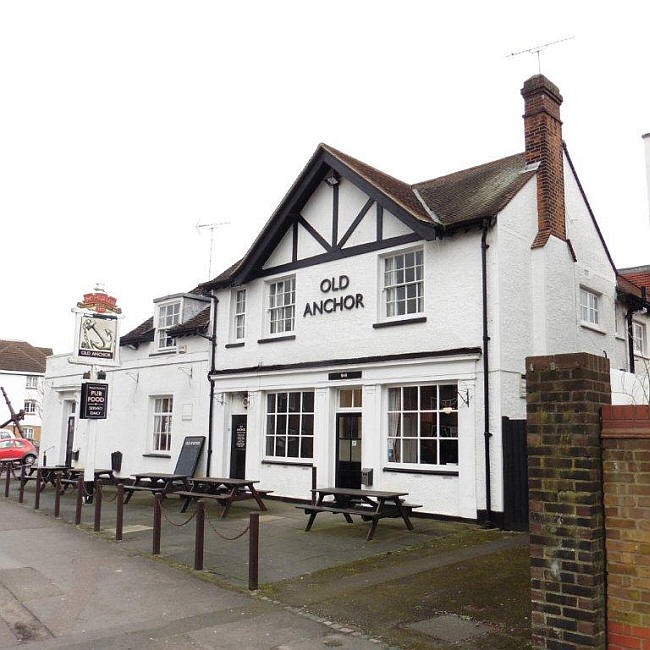The Old Anchor pubs seem to be as common as the blue variety. This one is in Cheshunt, Hertfordshire.

The Old Anchor pubs seem to be as common as the blue variety. This one is in Cheshunt, Hertfordshire.

Bit like Admirals then Dave.
Admiral Samuel Hood, 1st Viscount Hood (12 December 1724 – 27 January 1816) was a Royal Navy officer. As a junior officer he saw action during the War of the Austrian Succession. While in temporary command of Antelope, he drove a French ship ashore in Audierne Bay, and captured two privateers in 1757 during the Seven Years' War. He held senior command as Commander-in-Chief, North American Station and then as Commander-in-Chief, Leeward Islands Station, leading the British fleet to victory at Battle of the Mona Passage in April 1782 during the American Revolutionary War. He went on to be Commander-in-Chief, Portsmouth, then First Naval Lord and, after briefly returning to the Portsmouth command, became Commander-in-Chief, Mediterranean Fleet during the French Revolutionary Wars.
The Business of the commander-in-chief is first to bring an enemy fleet to battle on the most advantageous terms to himself, (I mean that of laying his ships close on board the enemy, as expeditiously as possible); and secondly to continue them there until the business is decided.
Admiral John Byng (baptised 29 October 1704 – 14 March 1757)[1] was a Royal Navy officer who was notoriously court-martialled and shot dead by a firing squad. After joining the navy at the age of thirteen, he participated at the Battle of Cape Passaro in 1718. Over the next thirty years he built up a reputation as a solid naval officer and received promotion to vice-admiral in 1747. He also served as Commodore-Governor of Newfoundland Colony in the 1740s, and was a member of parliament from 1751 until his death.
Byng is best known for "failing" to relieve a besieged British garrison during the Battle of Minorca at the beginning of the Seven Years' War. Byng had sailed for Minorca at the head of a hastily assembled fleet of vessels, some of which were in poor condition. He fought an inconclusive engagement with a French fleet off the Minorca coast, and then elected to return to Gibraltar to repair his ships. Upon return to Britain, Byng was court-martialled and found guilty of failing to "do his utmost" to prevent Minorca falling to the French. He was sentenced to death and, after pleas for clemency were denied, was shot dead by a firing squad on 14 March 1757.
The Business of the commander-in-chief is first to bring an enemy fleet to battle on the most advantageous terms to himself, (I mean that of laying his ships close on board the enemy, as expeditiously as possible); and secondly to continue them there until the business is decided.
Bookmarks